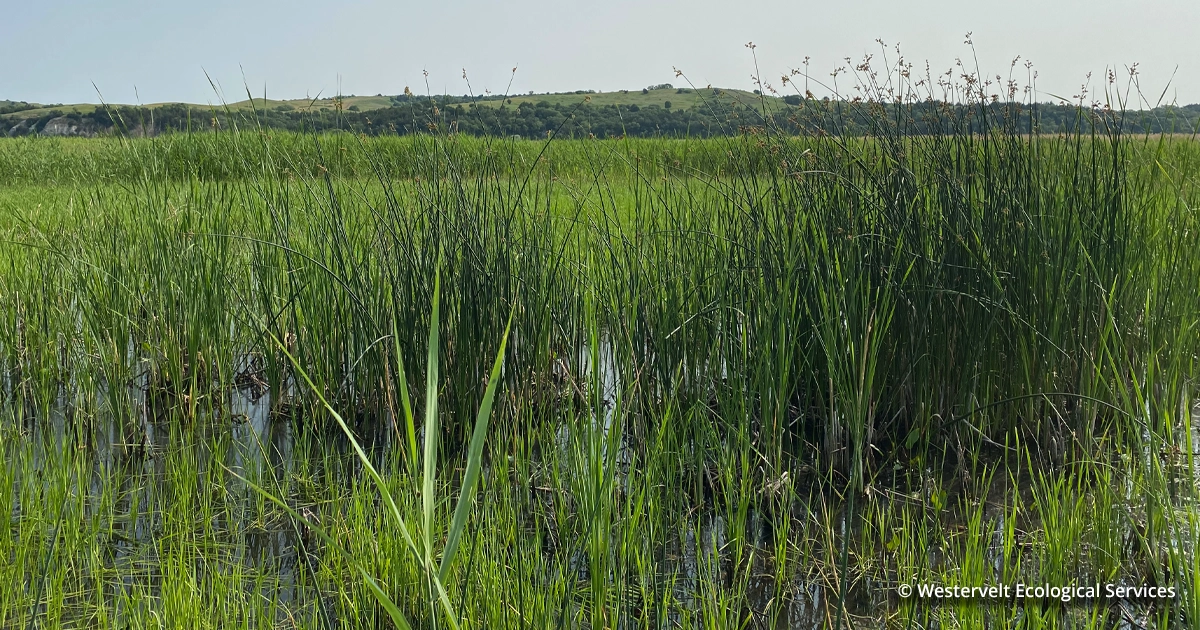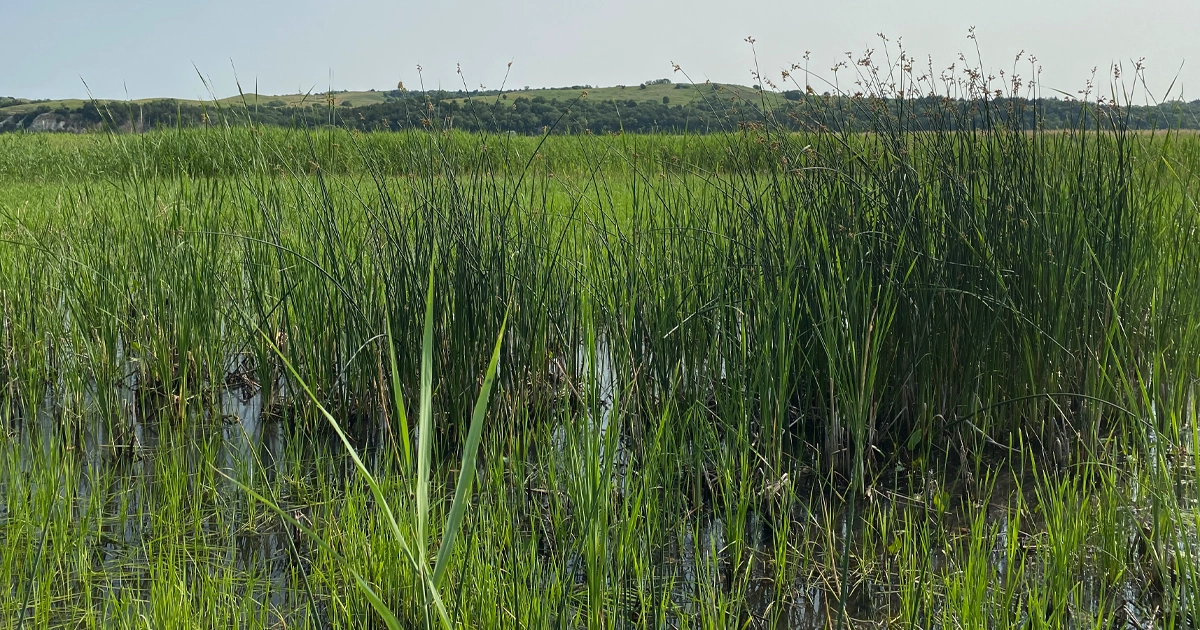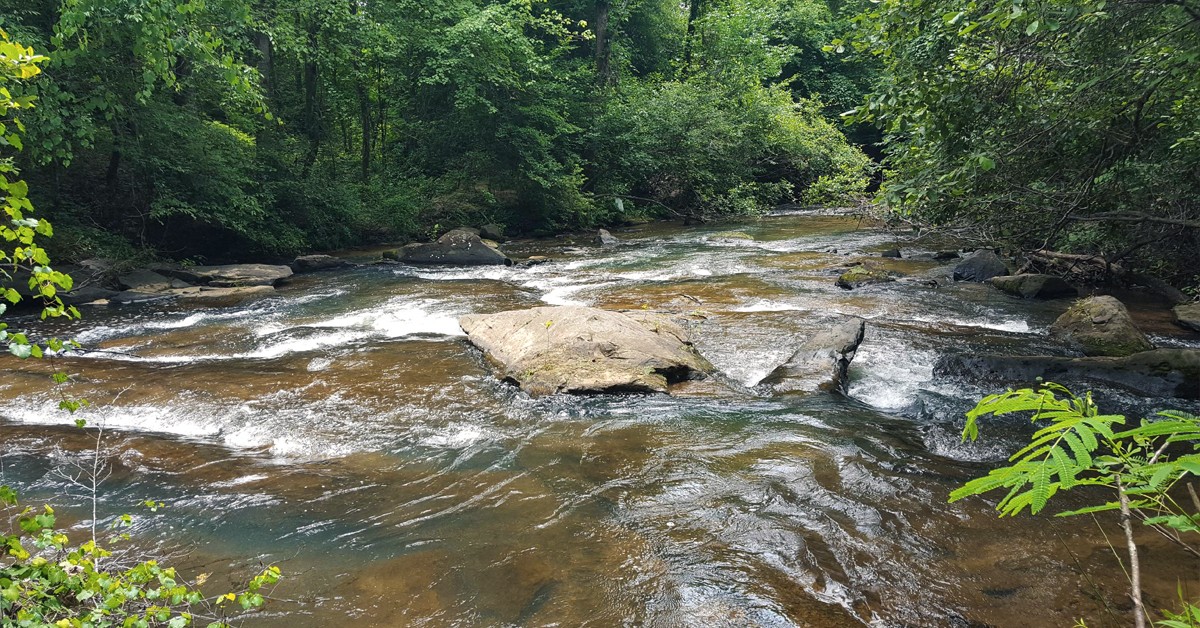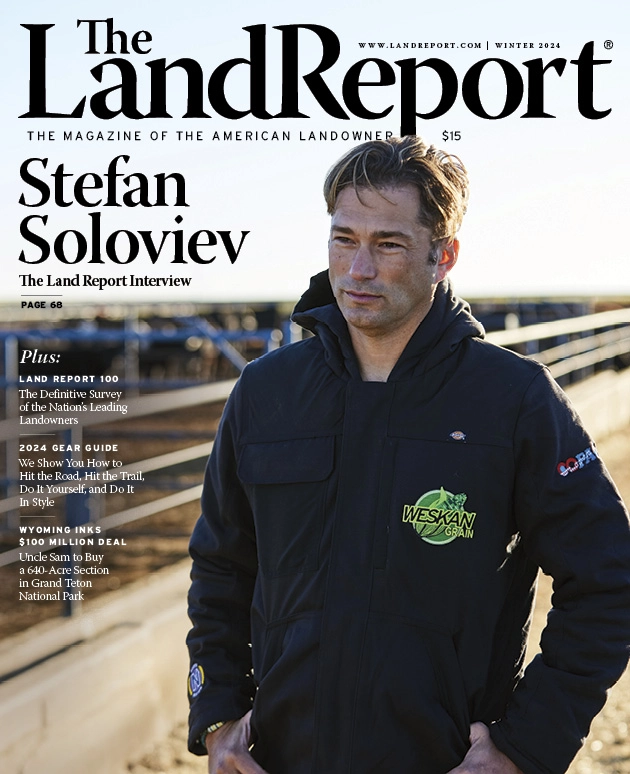Westervelt Heirs
It is not often that a land purchase involves working with a Traditional Knowledge Keeper of a Native American Nation. But that was the situation for officials with Westervelt Ecological Services (WES) — an environmental restoration and conservation arm of The Westervelt Company — during the recent purchase of 109 acres situated along the Missouri River in Northern Nebraska.
Rank:
#19
Total Acres:
566,000

Westervelt Heirs

It is not often that a land purchase involves working with a Traditional Knowledge Keeper of a Native American Nation. But that was the situation for officials with Westervelt Ecological Services (WES) — an environmental restoration and conservation arm of The Westervelt Company — during the recent purchase of 109 acres situated along the Missouri River in Northern Nebraska.
Rank:
#19
Total Acres:
566,000
WES specializes in compensatory wetland, stream, and species mitigation. The Westervelt Company established WES in 2006 with a southeastern office in Alabama, a western office in California, and a Rocky Mountain office in Colorado. In early 2023, Montreal, Canada-based CDPQ invested in WES, with a goal to jointly achieve ambitious sustainability goals. In 2021, members of the WES Rocky Mountain regional office met with the Nebraska Department of Transportation about providing mitigation solutions for a widening-and-improvement project for flood-prone Highway 12.
“With the new road design, there are going to be unavoidable impacts to wetlands, and they need to be mitigated in some way,” says Will Duggins, business development manager for the WES Rocky Mountain region. “Much of the area within the Missouri River flood plain is already high-functioning or protected wetlands, and these are not ideal candidates for wetland-mitigation projects. We have to demonstrate that we are improving the function and value of the wetlands being utilized for mitigation. This is typically done by taking low-functioning wetlands and re-establishing, enhancing, or rehabilitating wetlands within a site. And then there are all these bluffs just off the Missouri River where you can’t create a wetlands project. So we really had to search the area to figure out where to put the project.”
Once WES identified an appropriate area, officials met with approximately a dozen landowners before finding a family that was interested in selling. The purchase closed in October, and the road project is scheduled to begin in 2025. Upon construction of the mitigation site, WES has approximately three years to show that the restoration process is performing as planned. Upon achieving restoration goals, the property will be placed in perpetual conservation, and the company will handle long-term management activities.
But before any of that could take place, regulatory and permitting requirements mandated that the Ponca Nation, which originally was displaced from the area in 1877, review and provide feedback on the project.
WES officials began working with Stacy Laravie, a Ponca Nation member and Traditional Knowledge Keeper. “We had to get buy-in from the Nation. They were such an important party to this whole process because this is part of their landscape,” says WES Rocky Mountain Regional Director and Project Manager Tyler Bell. “We consulted with Laravie in understanding how and where to incorporate traditional and tribal plants of importance and in designing areas of the site to ensure safe and sustained access for Ponca Nation members for foraging and collection of wild plants for consumption and use.
“Part of our due-diligence period that was different with this project was getting that support from the Nation. Every step of the way, we’ve kept tribal concerns in mind, whether that’s access or history. This piece of land is very important to them.”
When tasked with naming the project, Laravie chose “Ni’ St’a St’a Nada’ ha Permittee-Responsible Mitigation Site,” a phrase that aligns with Ponca Nation and Westervelt land-stewardship values: “Wetland Live on Well.”
– Cary Estes
Articles Featuring Westervelt Heirs
For more than a century, timber production has been an integral part of the Alabama-based Westervelt [...]
It is not often that a land purchase involves working with a Traditional Knowledge Keeper of [...]
The past, present, and future of the Westervelt Company are all easily visible from a small [...]
WES specializes in compensatory wetland, stream, and species mitigation. The Westervelt Company established WES in 2006 with a southeastern office in Alabama, a western office in California, and a Rocky Mountain office in Colo-rado. In early 2023, Montreal, Canada-based CDPQ invested in WES, with a goal to jointly achieve ambitious sustainability goals. In 2021, members of the WES Rocky Mountain regional office met with the Nebraska Department of Transportation about providing mitigation solutions for a widening-and-improvement project for flood-prone Highway 12.
“With the new road design, there are going to be unavoidable impacts to wetlands, and they need to be mitigated in some way,” says Will Duggins, business development manager for the WES Rocky Mountain region. “Much of the area within the Missouri River flood plain is already high-functioning or protected wetlands, and these are not ideal candidates for wetland-mitigation projects. We have to demonstrate that we are improving the function and value of the wetlands being utilized for mitigation. This is typically done by taking low-functioning wetlands and re-establishing, enhancing, or rehabilitating wetlands within a site. And then there are all these bluffs just off the Missouri River where you can’t create a wetlands project. So we really had to search the area to figure out where to put the project.”
Once WES identified an appropriate area, officials met with approximately a dozen landowners before finding a family that was interested in selling. The purchase closed in October, and the road project is scheduled to begin in 2025. Upon construction of the mitigation site, WES has approximately three years to show that the restoration process is performing as planned. Upon achieving restoration goals, the property will be placed in perpetual conservation, and the company will handle long-term management activities.
But before any of that could take place, regulatory and permitting requirements mandated that the Ponca Nation, which originally was displaced from the area in 1877, review and provide feedback on the project.
WES officials began working with Stacy Laravie, a Ponca Nation member and Traditional Knowledge Keeper. “We had to get buy-in from the Nation. They were such an important party to this whole process because this is part of their landscape,” says WES Rocky Mountain Regional Director and Project Manager Tyler Bell. “We consulted with Laravie in understanding how and where to incorporate traditional and tribal plants of importance and in designing areas of the site to ensure safe and sustained access for Ponca Nation members for foraging and collection of wild plants for consumption and use.
“Part of our due-diligence period that was different with this project was getting that support from the Nation. Every step of the way, we’ve kept tribal concerns in mind, whether that’s access or history. This piece of land is very important to them.”
When tasked with naming the project, Laravie chose “Ni’ St’a St’a Nada’ ha Permittee-Responsible Mitigation Site,” a phrase that aligns with Ponca Nation and Westervelt land-stewardship values: “Wetland Live on Well.”
– Cary Estes
Articles Featuring Westervelt Heirs
For more than a century, timber production has been an integral part of the Alabama-based Westervelt [...]
It is not often that a land purchase involves working with a Traditional Knowledge Keeper of [...]
The past, present, and future of the Westervelt Company are all easily visible from a small [...]
The Magazine Of The American Landowner
Please sign me up to receive breaking news and updates from The Land Report:








